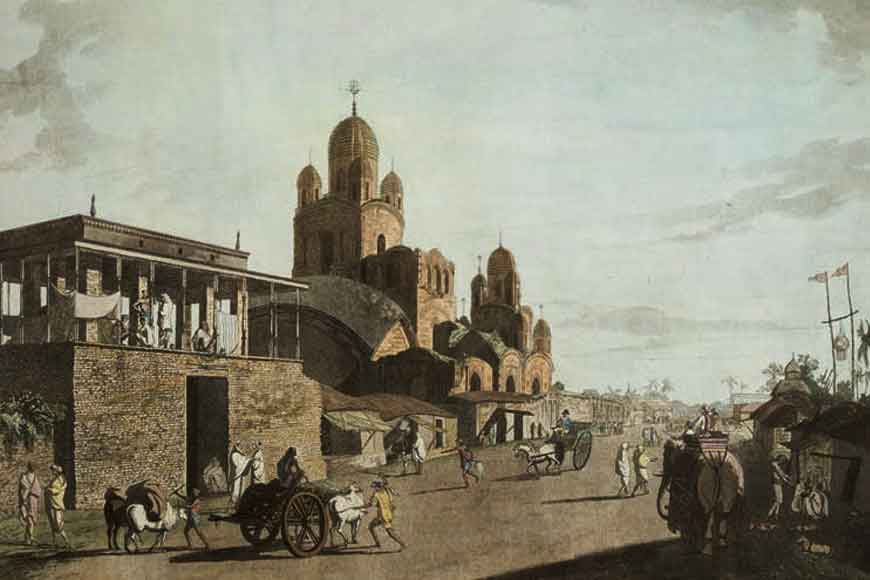The temple in Kolkata that survived an earthquake and cyclone

Calcutta is just a little over 300 years old, yet traces of decay and decadence are evident in the once-magnificent edifices of north Calcutta. In the oldest quarters of Chitpuror Rabindra Sarani stands the innocuous Bagalamukhi Kali Mandir amid the din surrounding the once-magnificent structure and it generally goes unnoticed by those passing the area. This Navaratna or nine-turreted temple, also known as ‘Black Pagoda’ and ‘Gentu Pagoda’ was built by the first Black Zamindar, Gobindaram Mitra. He was a deputy collector who assisted English collectors in gathering revenue. He amassed immense wealth and became a living legend.
Around 1725, Mitra commissioned construction of a grand brick-built temple complex, the work of which was completed in 1730-31. It was a nine-turreted or Navaratna temple on the banks of the Ganges at Kumortuli. The original temple appears in artist Thomas Daniel’s painting, Gentoo Pagoda and House (1787) and depicts a Pancharatna temple flanked by two smaller Navaratna temples. The painting shows a Dalan (courtyard) with three arches topped by a small basement. To this was added a Dochala (two-tier) temple. There was another navaratna temple which was half the size of the main temple within the complex
Interestingly, it was once the tallest building in the city and survived an earthquake and a cyclone on the same day! The highest turret of the temple originally rose to 165 feet, higher than the Octerlony Monument (Shahid Minar) (157 feet). It was the highest building in Calcutta in the 18th century.The temple’s spire was visible from far away and was a navigational aid for sailors hence they called it a ‘pagoda.’As the temple was built by a Black (native) Zamindar, sailors entered the name in their shipping logs as the Black Pagoda, and the name stuck to the temple permanently.
The rate of the temple’s gradual decay was seen in the 1829 painting, Chitpore Road and the Black Pagoda by Thomas Princep and in the 1830 painting, Hindu Mut in the Chitpore Bazar by Charles D’Oyly, the temple is portrayed in its dilapidated condition.Despite its gradual decay due to the apathy shown by both the government and locals, the temple functionseven today. Faithful devotees offer prayers and they have kept the home and hearth of the sanctum sanctorum burning. Recently, some renovation work was done and the older spires were replaced with newer triangular ones.










